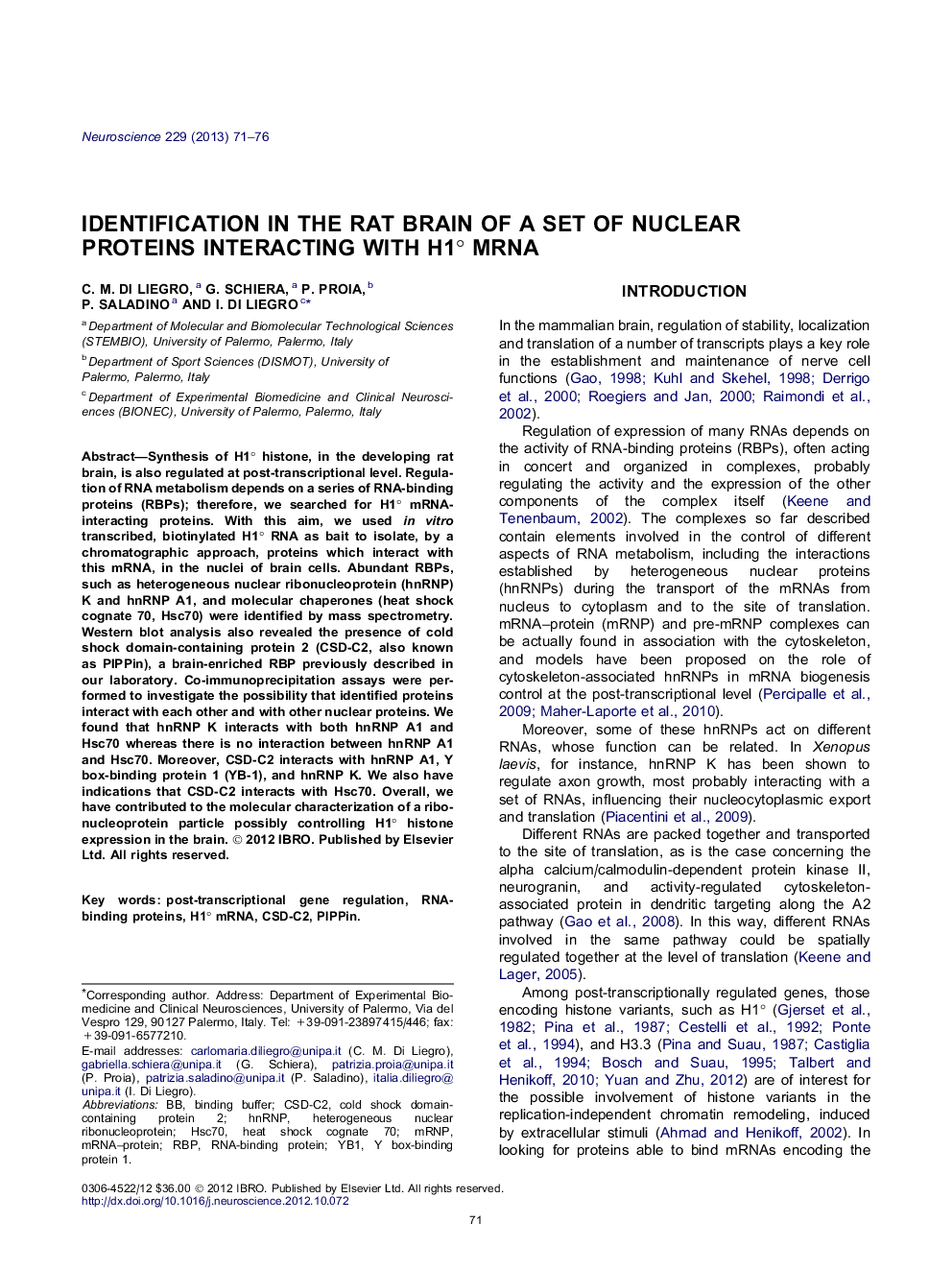| Article ID | Journal | Published Year | Pages | File Type |
|---|---|---|---|---|
| 4338124 | Neuroscience | 2013 | 6 Pages |
Synthesis of H1° histone, in the developing rat brain, is also regulated at post-transcriptional level. Regulation of RNA metabolism depends on a series of RNA-binding proteins (RBPs); therefore, we searched for H1° mRNA-interacting proteins. With this aim, we used in vitro transcribed, biotinylated H1° RNA as bait to isolate, by a chromatographic approach, proteins which interact with this mRNA, in the nuclei of brain cells. Abundant RBPs, such as heterogeneous nuclear ribonucleoprotein (hnRNP) K and hnRNP A1, and molecular chaperones (heat shock cognate 70, Hsc70) were identified by mass spectrometry. Western blot analysis also revealed the presence of cold shock domain-containing protein 2 (CSD-C2, also known as PIPPin), a brain-enriched RBP previously described in our laboratory. Co-immunoprecipitation assays were performed to investigate the possibility that identified proteins interact with each other and with other nuclear proteins. We found that hnRNP K interacts with both hnRNP A1 and Hsc70 whereas there is no interaction between hnRNP A1 and Hsc70. Moreover, CSD-C2 interacts with hnRNP A1, Y box-binding protein 1 (YB-1), and hnRNP K. We also have indications that CSD-C2 interacts with Hsc70. Overall, we have contributed to the molecular characterization of a ribonucleoprotein particle possibly controlling H1° histone expression in the brain.
► We used biotinylated H1° RNA as bait to isolate H1° RNA-interacting proteins. ► We identified proteins which are likely part of a ribonucleoprotein particle. ► The putative particle contains known RNA-binding proteins and chaperones.
